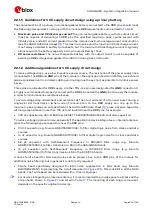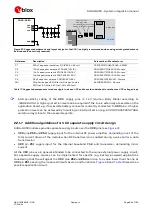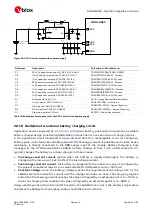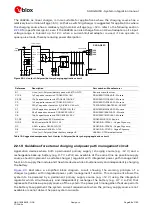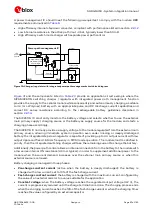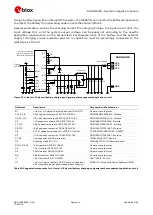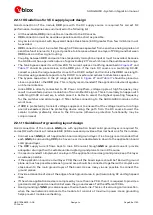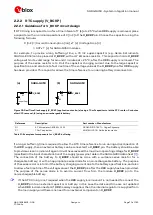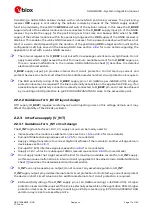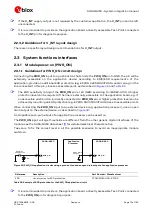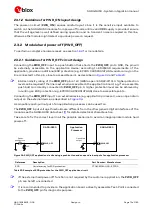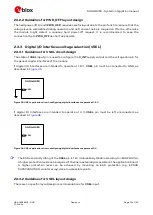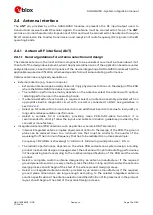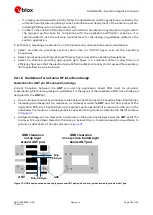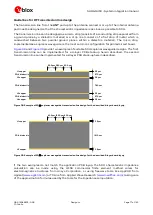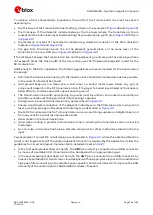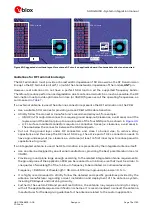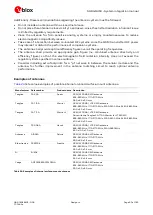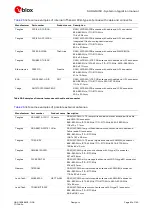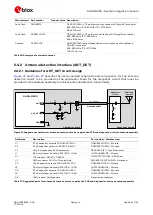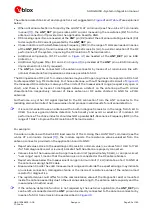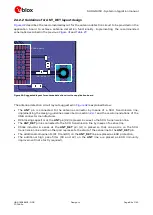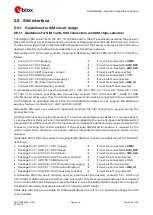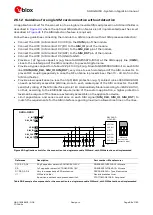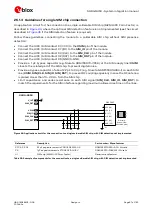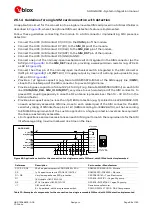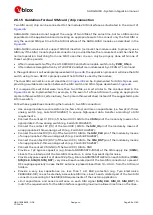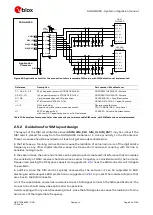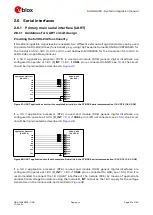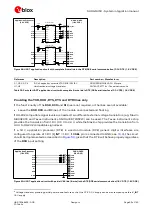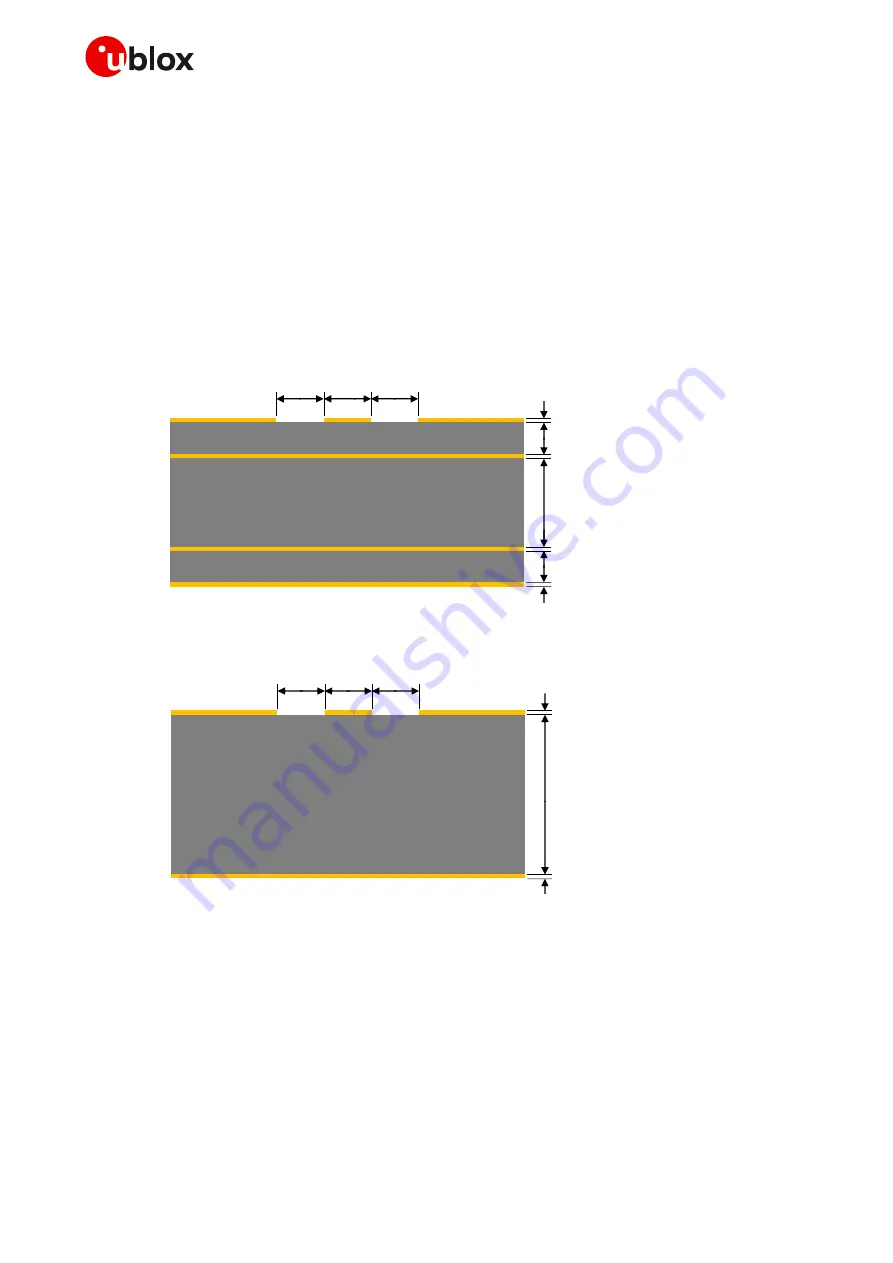
SARA-G450 - System integration manual
UBX-18046432 - R08
Design-in
Page 77 of 143
C1-Public
Guidelines for RF transmission line design
The transmission line from the ANT pad up to the antenna connector or up to the internal antenna
pad must be designed so that the characteristic impedance is as close as possible to 50
.
The transmission line can be designed as a micro strip (consists of a conducting strip separated from
a ground plane by a dielectric material) or a strip line (consists of a flat strip of metal which is
sandwiched between two parallel ground planes within a dielectric material). The micro strip,
implemented as a coplanar waveguide, is the most common configuration for printed circuit board.
provide two examples of suitable 50
coplanar waveguide designs. The first
transmission line can be implemented for a 4-layer PCB stack-up herein described, the second
transmission line can be implemented for a 2-layer PCB stack-up herein described.
35
µ
m
35
µ
m
35
µ
m
35
µ
m
270
µ
m
270
µ
m
760
µ
m
L1 copper
L3 copper
L2 copper
L4 copper
FR-4 dielectric
FR-4 dielectric
FR-4 dielectric
380
µ
m 500
µ
m
500
µ
m
Figure 38: Example of 50
coplanar waveguide transmission line design for the described 4-layer board layup
35
µ
m
35
µ
m
1510
µ
m
L2 copper
L1 copper
FR-4 dielectric
1200
µ
m 400
µ
m
400
µ
m
Figure 39: Example of 50
coplanar waveguide transmission line design for the described 2-layer board layup
If the two examples do not match the application PCB layup, the 50
characteristic impedance
calculation can be made using the HFSS commercial finite element method solver for
electromagnetic structures from Ansys Corporation, or using freeware tools like AppCAD from
Agilent (
) or TXLine from Applied Wave Research (
), taking care
of the approximation formulas used by the tools for the impedance computation.

